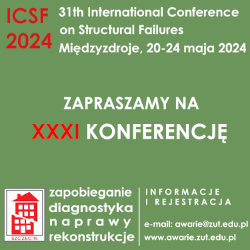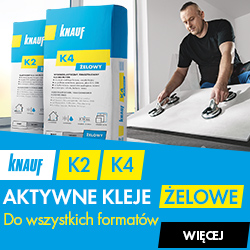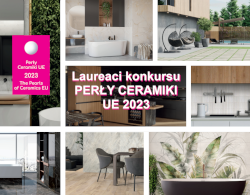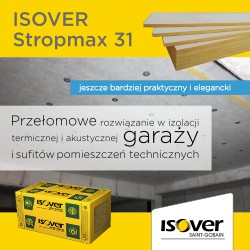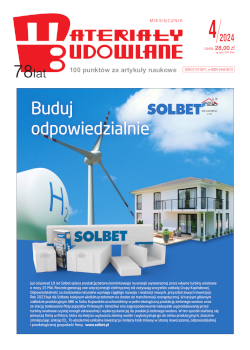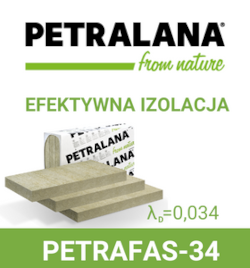dr hab. inż. Robert Wójcik, prof. UWM UniwersytetWarmińsko-Mazurski w Olsztynie, Wydział Geodezji, Inżynierii Przestrzennej i Budownictwa
dr inż. Aldona Skotnicka-Siepsiak UniwersytetWarmińsko-Mazurski w Olsztynie, Wydział Geodezji, Inżynierii Przestrzennej i Budownictwa
dr inż. Piotr Kosiński UniwersytetWarmińsko-Mazurski w Olsztynie, Wydział Geodezji, Inżynierii Przestrzennej i Budownictwa
Autor do korespondencji e-mail : Ten adres pocztowy jest chroniony przed spamowaniem. Aby go zobaczyć, konieczne jest włączenie w przeglądarce obsługi JavaScript.
DOI: 10.15199/33.2016.03.03
W artykule omówiono problemy związane z zawilgoceniem hal basenowych. Opisano zagrożenia wynikające z niewłaściwie zaprojektowanych i wykonanych stropodachów. Wykazano wpływ wentylacji na stan wilgotnościowy hal basenowych. Zbudowano model numeryczny do oceny rozkładu temperatury oraz kierunków i prędkości powietrza w hali basenowej, który pozytywnie przeszedł weryfikację eksperymentalną.
Słowa kluczowe: wilgoć, hale basenowe, zadaszenie, symulacja CFD, eksperyment.
* * *
Impact of ventilation on the moisture state of swimming pool hall – experimental verification of the numerical model
The article presents themoisture problems of swimming pool halls. There were described the improperly designed and constructed roofs and related moisture risks. The influence of ventilation on the moisture state of pool halls was highlighted. Apaper presents the numericalmodelwhichwas created to assess temperature distribution and the direction and speed of air in the pool hall. The model passed the experimental verification.
Keywords: moisture, swimming pool halls, roof, CFD simulation, experiment.
Literatura
[1] Byrdy Aleksander, Tomasz Kisilewicz 2011. „Ocena cieplno-wilgotnościowa stropodachu szczelinowego nad basenem na przykładzie rozwiązania zrealizowanego w praktyce”. Przegląd Budowlany (2)” 47-53.
[2] Deseyve Christophs, Thomas Bednar. 2008. „Wind induced airflow through lightweight pitched roof contruction: Test roof element – measurements andmodel validation”. Proceedings of the 8th Symposiumon Building Physics in the Nordic Countries. Kopenhaga.
[3] Janssens Arnold, Hugo Hens. 2003. “Interstitial Condensation Due to Air Leakage: A Sensitivity Analysis”. Journal of Thermal Envelope and Building Science (27): 15-29.
[4] Lstiburek Joseph, Kim Pressnail, John Timusk. 2002. “Air Pressure and Building Envelopes”. Journal of Building Physics (26): 53-91.
[5] Pływalnie kryte w Polsce. Inwentaryzacja bazy sportowej. 2015. Ministerstwo Sportu i Turystyki. Warszawa.
[6] Simonson Carey, Tuomo Ojanen, Mikael Salonvaara. 2005. “Moisture Performance of an Airtight, Vapor-permeable Building Envelope in a Cold Climate”. Journal of Thermal Envelope and Building Science (28): 205-226.
[7] Skotnicka-Siepsiak Aldona. 2016. „Assessment of thermal comfort in a lecture hallwith the application of instruments for computational fluid dynamics”. Technical Sciences (w druku).
[8] Thorsell Thomas, Mark Bomberg. 2008. “Integrated Methodology for Evaluation of Energy Performance of Building Enclosures: Part II – Examples of Application to Residential Walls”. Journal of Building Physics (32): 49-65.
[9] Vinha Juha. 2007. Hygrothermal Performance of Timber-Framed External Walls in Finnish Climatic Conditions: A Method for Determining the SufficienWater Vapour Resistance od the Interior Lining of a Wall Assembly, Tampere University of Technology, Tampere.
[10] Viitanen Hannu, Juha Vinha, Kati Salminen, TuomoOjanen, Peuhkuri Ruut, Paajanen Leena, LähdesmäkiKimmo. 2010. „Moisture andBio-deterioration Risk of BuildingMaterials and Structures”. Journal of Building Physics (33): 201-224.
[11] Wójcik Robert, Piotr Kosiński. 2014. „Jak zapewnić szczelność powietrzną poddaszy użytkowych”. Materiały Budowlane 502 (6): 2-3, 6.
Otrzymano: 26.01.2016 r.
Materiały Budowlane 03/2016, str. 9-12 (spis treści >>)










